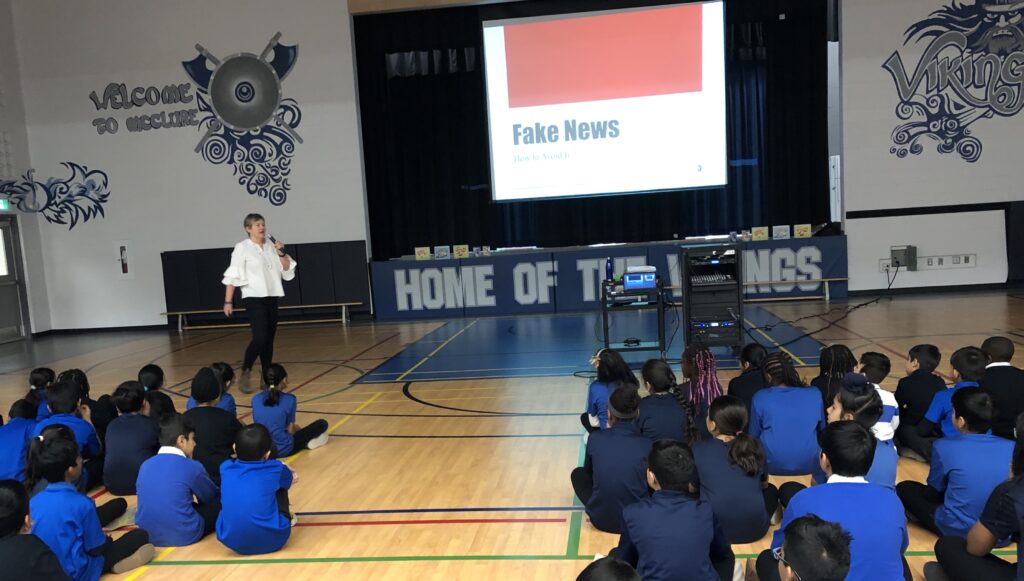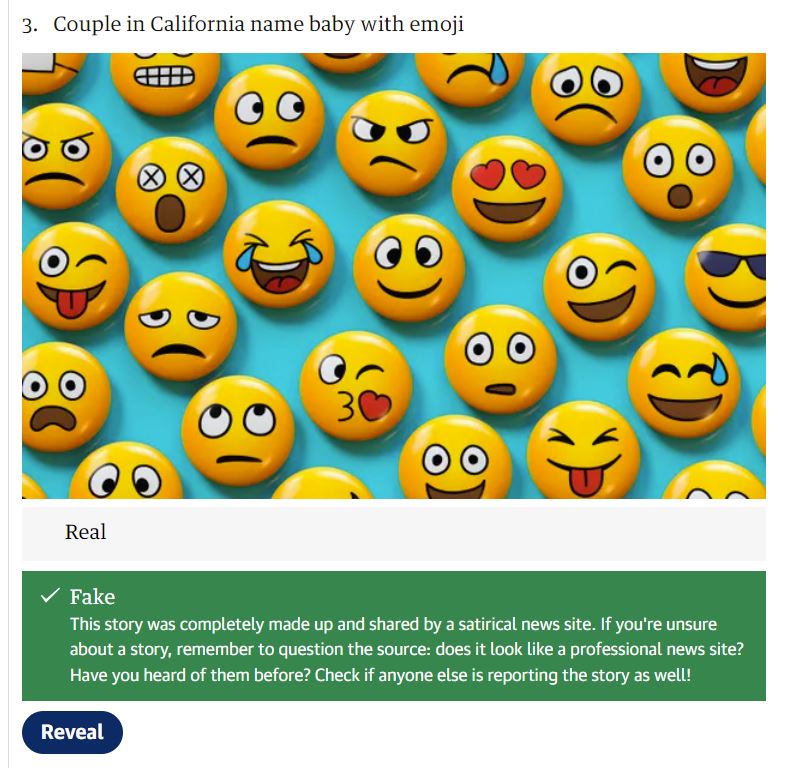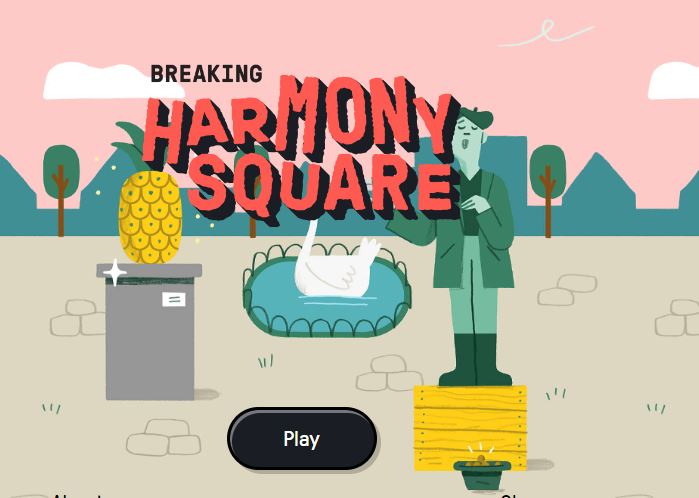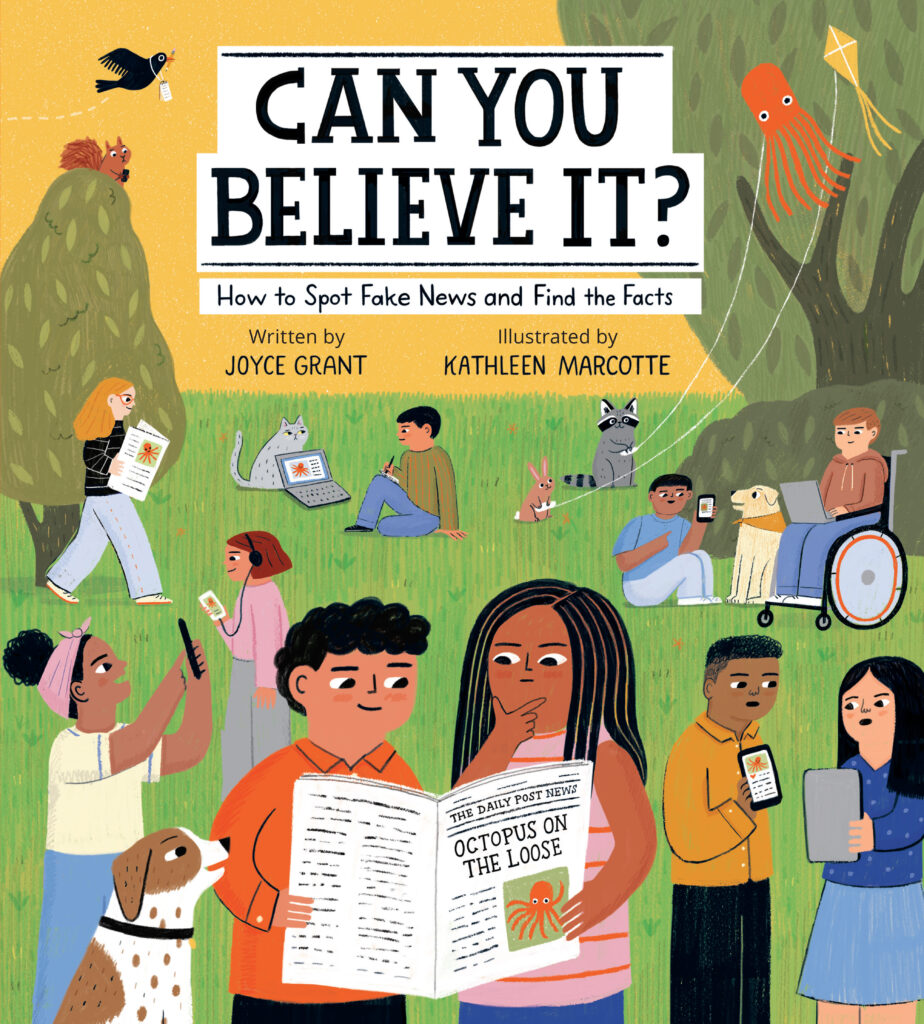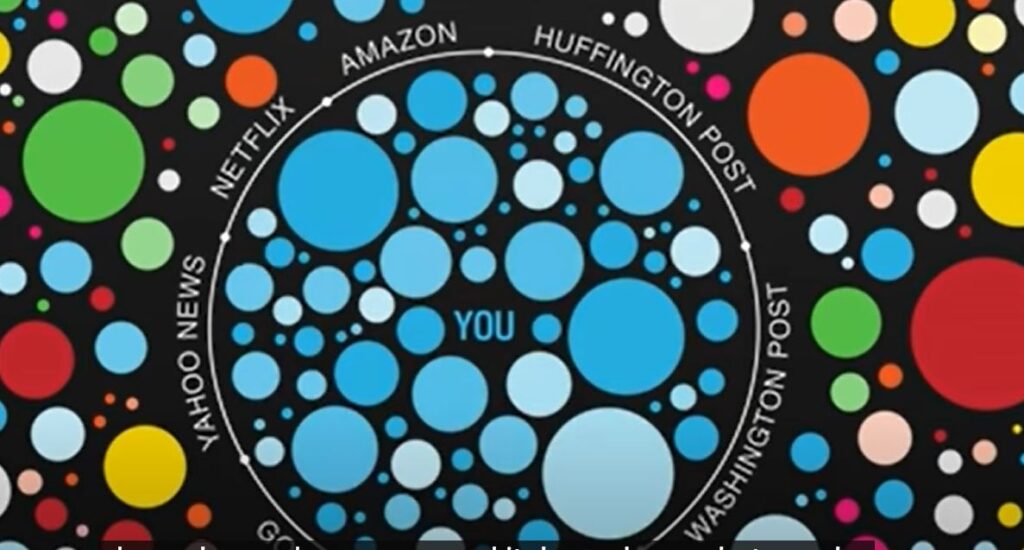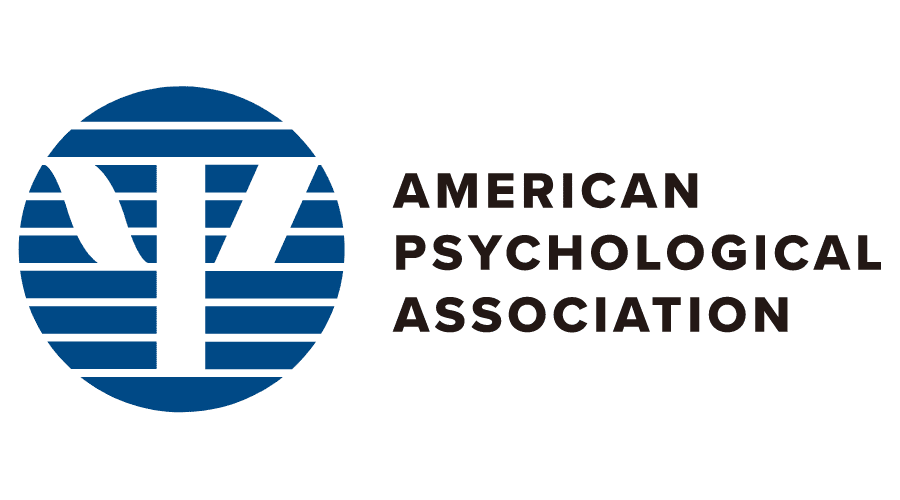Great resources to help you avoid “fake news”
and foster critical thinking
BOOK A VIRTUAL OR IN-PERSON PRESENTATION!
Joyce Grant, TKN’s co-founder, gives high-energy, engaging virtual presentations for students and for educators as well as keynotes, on “fake news.” How to spot it and how to teach about it.
Her passion for the subject and broad base of knowledge over more than a decade, combined with her background as a journalist make for interesting, exciting presentations.
Find out more about how to book Joyce Grant for a virtual or an in-person visit. Click here or contact tkninquiries@gmail.com.
ONLINE GAMES
These may be the best–they’re certainly the most fun–way to learn about fake news and journalism.
Click here or scroll for great online games.
We highly recommend these games because they’re fun, educational and support your teaching.
ARTICLES & RESEARCH
Smart, succinct, readable articles about fake news and how to help young people spot it.
Click here or scroll for excellent articles and research studies about fake news.
Use in these classroom or for background information for your own learning.
MEDIA LITERACY ORGANIZATIONS
Our curated collection of the best fake news websites, fact-checkers and organizations to support you in learning, and teaching, about fake news.
Click here or scroll for fake-news fighting organizations.
They have tons of resources.
ONLINE GAMES

BBC iReporter may be the single best online resource for learning about how real-world journalism works. Highly recommended.
In BBC iReporter you’re a BBC journalist covering breaking news and have to decide whether or not to post things on social media. It’s real-world and it’s exciting. It will help young people to understand the pressures on journalists to be accurate and at the same time, publish news in a timely manner.
Fake or Real? Look at the headline and then guess if the article is real … or fake news.
The Guardian has put together a fun and interesting group of real and fake headlines for this simple-to-use quiz.
Harmony Square is an online game in which you’re the bad guys, posting fake news and sowing disharmony. It’s silly and fun and it has quite a bit of reading to it.
https://inoculation.science/inoculation-games/harmony-square/

“Go Viral!” is a game with a medical misinformation game. You are the fake news creator. You win by going viral with lies and fake news. (By the same people who brought you Breaking Harmony Square, above.)
Not for everyone, because it shows you bad habits in the hopes that you’ll recognize good ones. Older students (grade 7+) may come away with some solid ideas about misinformation that will help them spot it in the future.
Can you tell if a commenter or poster is a troll, a bot or a real human? It’s important to know the difference so you don’t accidentally share their deliberately created fake news!
This is a really great (and fun) game that not only teaches you what to look for, but lets you guess to see if you’re right. https://spotthetroll.org/start

Doubt it or Trust It by The Canadian Journalism Federation’s NewsWise. An online game in which you guess if something is fake or real.

Fake or Foto? Take a look at the image and then take a guess. You’ll get the answers at the end.
https://area.autodesk.com/fakeorfoto
We’ve used this very successfully with classes, both in-person and online. Young people love trying to out-guess the adults (and they usually do)!
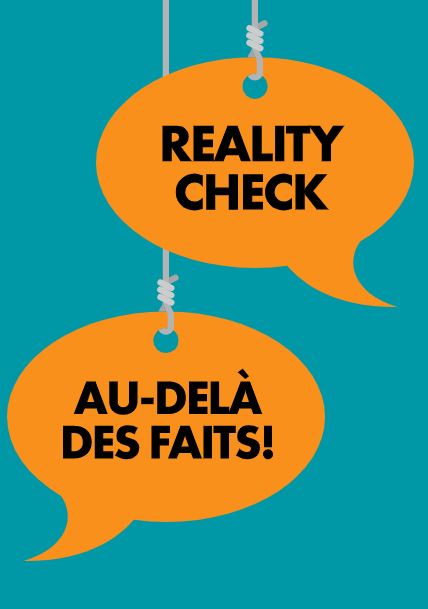
Play “Reality Check” by Media Smarts and learn how to check whether something is fake or real.
http://mediasmarts.ca/sites/mediasmarts/files/games/reality-check/index.html#/

Play FakeOut (CIVIX/Newsliteracy.ca): https://newsliteracy.ca/fakeOut
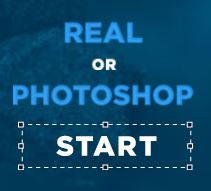
Is it Real or Photoshopped? (by Adobe).
https://landing.adobe.com/en/na/products/creative-cloud/69308-real-or-photoshop/index.html
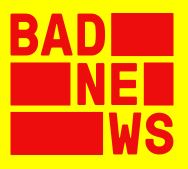
In Bad News (Junior), created by a team of academics from Cambridge University and media experts, you become a fake news creator. Can you go viral with your lies and exaggerations? The aim is to teach what “not” to do, by teaching what the baddies do.

University of Akron: Fake News Quiz

Fake News board game. We played this several times with different age groups and found it fun and educational. Lots of interesting facts for the curious. Worth the price ($20 US from BreakingGames.com. Amazon Canada had it online for awhile at $12 CDN, but we can’t find it there now. It’s likely online in other places. Let us know if you can find it in Canada, please.)
In Factitious2020 you try to figure out which articles are fake and which are real.
It’s okay, but a bit wordy, with articles that are fairly lengthy and involved. I’m not sure that just looking at the name of a source would help you truly figure out if something’s fake or not–you’d probably also have to do some Googling as well. But if you want to do a deep dive into teaching about whether an article is fake or not, and talk about sources, this game provides some excellent articles to work with.
ARTICLES & RESEARCH
Can You Believe It?: How to Spot Fake News and Find the Facts
Written by Teaching Kids News’ co-founder, Joyce Grant and beautifully illustrated by Kathleen Marcotte; published by Kids Can Press in 2022 and suitable for young people 9 to 12 as well as classrooms.
You can buy this illustrated non-fiction book in most independent bookstores or from one of the big chains including Amazon.com and Chapters Indigo.
For today’s tech-savvy kids, here’s the go-to resource for navigating what they read on the internet.
Should we believe everything we read online? Definitely not! And this book will tell you why. This fascinating book explores in depth how real journalism is made, what “fake news” is and, most importantly, how to spot the difference. It’s chock-full of practical advice, thought-provoking examples and tons of relevant information on subjects that range from bylines and credible sources to influencers and clickbait.
MIT study published in Science magazine shows misinformation travels faster than the truth (2018)
Interesting follow-up: The Atlantic published an article saying the MIT study, which had been widely spread, was itself misinformation. AND THEN The Atlantic reneged on that, saying the MIT study was valid after all.
All of this “misinformation” was duly retweeted and shared.
Wonder why people believe in conspiracy theories? This article gives insight into who these people are and why they believe seemingly ridiculous claims
If you’re teaching about POV or “filter bubbles,” this 2-minute BBC video is a must watch.
Journalist Steve Rosenberg is one of the BBC’s main Russia correspondents. He lives in, and reports on, Russia. His video shows very clearly why we all must break out of our “filter bubble” or “information silo.” Russians who only listen to the state TV there have a very different perspective on the invasion of Ukraine (btw, the word “invasion” is banned on Russian state TV) than those who get their news from outside sources via the Internet.
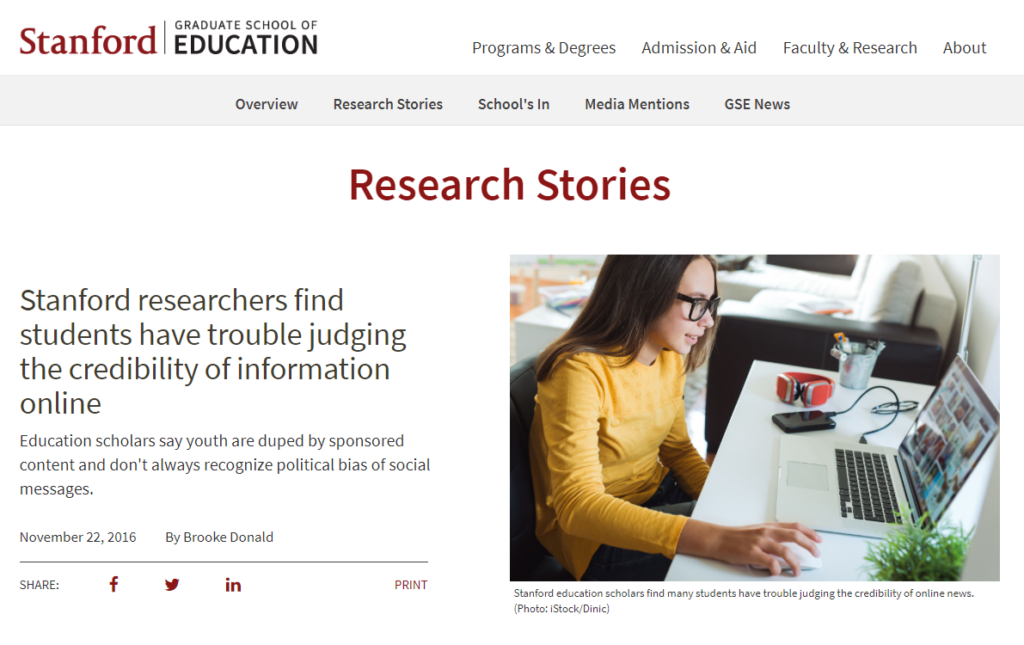
This is a must-read. If you’re an educator interested in media literacy, this is well worth your time.
Click here: STANFORD STUDY ABOUT KIDS AND FAKE NEWS.
Researchers at Stanford University wanted to know if kids can recognize–and avoid–fake news. The bottom line: not very well.
The study explains what kids were asked to do (ie, tell the difference between an ad and advertorial) and how they approached it.
The study looks at kids who were good at critical thinking (ie, uncovering fake news), kids who were okay but still had much to learn and kids who weren’t able to distinguish between real and fake news. It’s a fascinating look at kids and media, and many of the results may surprise you.
Filter Bubbles, by Eli Paliser
In this 2011 Ted Talk (9 mins) activist Eli Paliser talks about what he calls “filter bubbles.” We at TKN call them “silos” but it’s the same thing—how social media give you more of what you like. And less, to the point of nothing, of what you’re not clicking on.
We need to consciously seek out information that’s not in our bubble.
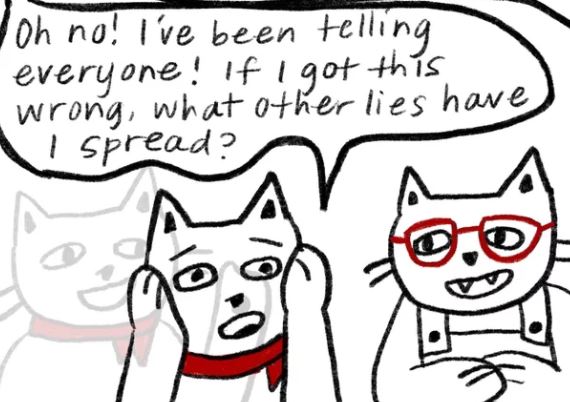
Really good NPR Cartoon about how to spot fake news. https://www.npr.org/2020/04/17/837202898/comic-fake-news-can-be-deadly-heres-how-to-spot-it (May 2021) Illo by Connie Jin.

Great article by The Walrus’ fact-checker Viviane Fairbank. She talks about why people share news they don’t even believe and the importance of showing people how “real” news is gathered–something we’ve been advocating for years. A must-read if you’re interested in facts and news and helping young people understand the difference.
https://thewalrus.ca/how-do-we-exit-the-post-truth-era/ (May 2021)
Art by JOSH HOLINATY (Image excerpt used with permission.)
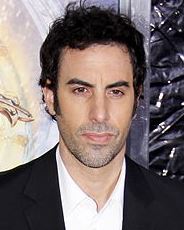
“We must save democracy from conspiracies” TIME magazine article by Sacha Baron Cohen, Oct. 8, 2020. Cohen, as you may know, is a satirist whose humour is often, as he puts it, prepubescent. Nevertheless, he is brilliant and in his article, has this to say about satire: “When it works, satire can humble the powerful and expose the ills of society.”

“Time to act on newsroom inequality” — Toronto Star
https://www.thestar.com/opinion/public_editor/2020/06/11/time-to-act-on-newsroom-inequality.html

Interesting BBC article about “Why (even) smart people believe coronavirus myths“
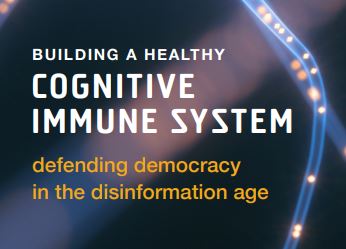
Cognitive immunity. This pdf contains an infographic that is a virtual master class in all aspects of disinformation. We’re still making our way through it ourselves, but if there’s a critical thinking topic you have never heard before, chances are it’s here:
https://www.iftf.org/fileadmin/user_upload/downloads/ourwork/IFTF_ODNI_Cognitive_Immunity_Map__2019.pdf
Great article (“Fighting Fake News in the Classroom”) in the American Psychological Association journal about teaching about misinformation. It’s a comprehensive article that includes tons of resources and links to great information about how to get kids thinking about this important subject. https://www.apa.org/monitor/2022/01/career-fake-news

CBC article on how to (tactfully) discourage the spread of false pandemic information in chats and email
https://www.cbc.ca/news/canada/covid-19-misinformation-rumour-1.5532302
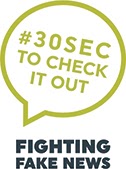
This article, on a website called #30 Seconds to Check it Out talks about various forms of fake news:
https://web.archive.org/web/20201125174822/https://30secondes.org/en/module/what-is-fake-news/
This Forbes article talks about microtransactions in games. You know, how games get harder and suddenly you want to buy (with real money) that “thing” that will help you get to the next level. Tell your kids it’s not them, it’s a deliberate business strategy. (Note: I don’t love the headline on this Forbes article–I’m not sure Mario Kart needs “two big warnings.” I don’t think the article really echoes the headline; but the point is a good one.)
The Toronto Star’s Classroom Connections has a great series of one-pagers about journalism (TKN’s Joyce Grant is a contributing writer and editor). They’re free to download and they include curriculum questions.
Teaching how “real journalism” is done is key to helping young people understand what “fake news” looks like and how it falls short.
Click here for For the Record: https://www.classroomconnection.ca/for-the-record.html

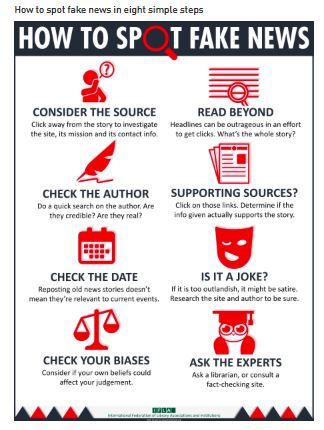
There is a nice infographic here, by Simon Fraser University, with eight “simple steps” to spotting fake news — not that spotting fake news is that simple, but these offer a good starting point.
Article from Webwise, which Google “the Irish Internet Safety Awareness Centre.” A good article and well written–clear and succinct.

Sometimes, it’s just nice to hear about it from librarians–here’s much of the same information about what fake news is, but this time from Enoch Pratt free Library, in Baltimore, Maryland, US.
https://www.prattlibrary.org/research/guides/spotting-fake-news
So interesting. In 2016, The New York Times followed a fake news tweet to show how it started and then how it went viral. It started as a tweet on Nov. 9. It was posted by someone else on Reddit, then a conservative discussion forum, was shared 5,000 times and posted on a Facebook page with 300,000 users.
On Nov. 10, US president Donald Trump tweeted about “the protesters,” which “emboldened” Tucker to think maybe he had something after all, if the president was tweeting about it.
Anyway, read the article for the full story–pretty interesting stuff. Tucker eventually did republish his tweet with “FALSE” stamped on it–that correction was retweeted just 29 times.
https://www.nytimes.com/2016/11/20/business/media/how-fake-news-spreads.html?_r=0

Interesting 2016 NPR article (and audio clip) about how they tracked down the creator of one specific fake news article: “FBI Agent Suspected in Hillary Email Leaks Found Dead in Apparent Murder-Suicide.”
“Everything about it was fictional… the town, the sheriff…,” says the “fake news entrepreneur” who created it.
NPR tracked him down in Los Angeles; he makes money from ads on his website. How much money? He wouldn’t say for himself but he said that “$10,000 to $30,000 a month is ‘in the ballpark.'”
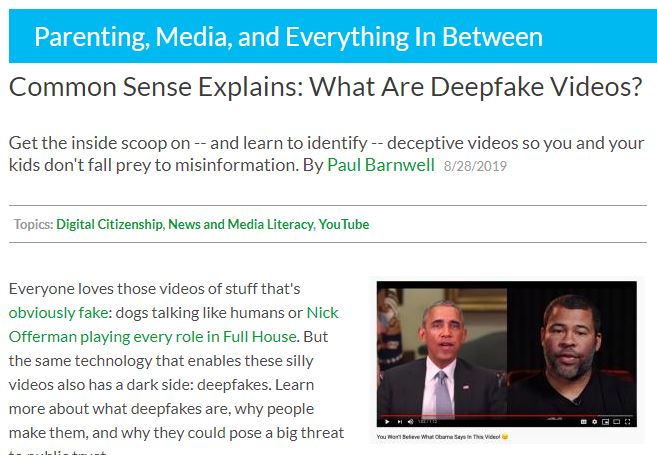
This Common Sense Media article talks about deepfakes (videos created, using AI, that make it look like someone is doing or saying something they didn’t). Note that the video they link to as a deepfake example is NOT suitable for children, because it contains swears and other inappropriate language.
https://www.commonsensemedia.org/blog/common-sense-explains-what-are-deepfake-videos

Article in the Rolling Stone magazine about Russia’s massive involvement in the dissemination of “fake news” as well as how fake news plays on our emotions–and not just provoking “shocking” or “sad” reactions, but “smug” and “happy.”

This article, on the Thomson Rivers University (TRU) website provides a good, simple run-down of the basics about fake news. It also gives links to sources if you’d like to go a bit more in-depth.

Feb. 15, 2019 study (Edelman Trust Barometer) says 71 per cent of Canadians are worried about “fake news.”
Here is an excellent Global News article that analyses the study.

A fun and quick video that really drives home why it’s so important to CHECK YOUR FACTS. By the News Literacy Project. You will want to share this with your students.

https://www.nytimes.com/2018/03/07/technology/two-months-news-newspapers.html
This article in THE SACRAMENTO BEE talks about a new bill proposed in California, to develop “statewide school standards on internet safety and digital citizenship, including cyberbullying and privacy.”

Great article in the NEW YORK TIMES ABOUT PRINT VS. DIGITAL NEWS: Reporter “took a step back in time,” as he puts it, and read news only from printed newspapers for two months. Here are his fascinating insights about the good and the bad of print vs. digital news.
From the article: “Real life is slow; it takes professionals time to figure out what happened, and how it fits into context. Technology is fast. Smartphones and social networks are giving us facts about the news much faster than we can make sense of them, letting speculation and misinformation fill the gap.”

VANESSA OTERO’S AWESOME MEDIA BIAS CHART can help you plot your favourite “real news” sources. (NOTE: Don’t use her chart without crediting Vanessa Otero and/or linking to her website, AllGeneralizationsAreFalse.com–her chart is copyrighted.)
In fact, you should check out VANESSA OTERO’S WEBSITE, ALLGENERALIZATIONSAREFALSE.COM for tons of great information on bias and the news.

HOW TO DO A GOOGLE REVERSE IMAGE SEARCH (includes links to places where you can do this).
Here’s why a reverse-image search is useful: Let’s say there’s a picture of a living room with a real live shark swimming around in it! You might want to double-check whether that’s a real image or one that’s been Photoshopped. You can do a reverse-image search and find the original image.
If it’s, say, a living room with no water and no shark, then you’ve got your answer!

THE HOUSE HIPPO — “That looked really real–but you knew it couldn’t be true.” One of our favourite go-to videos about critical thinking, still holds true today–even more, in fact. By Concerned Children’s Advertisers. YouTube video, 1:02.
The House Hippo video has had a makeover by Media Smarts! Check out House Hippo 2.0 here:
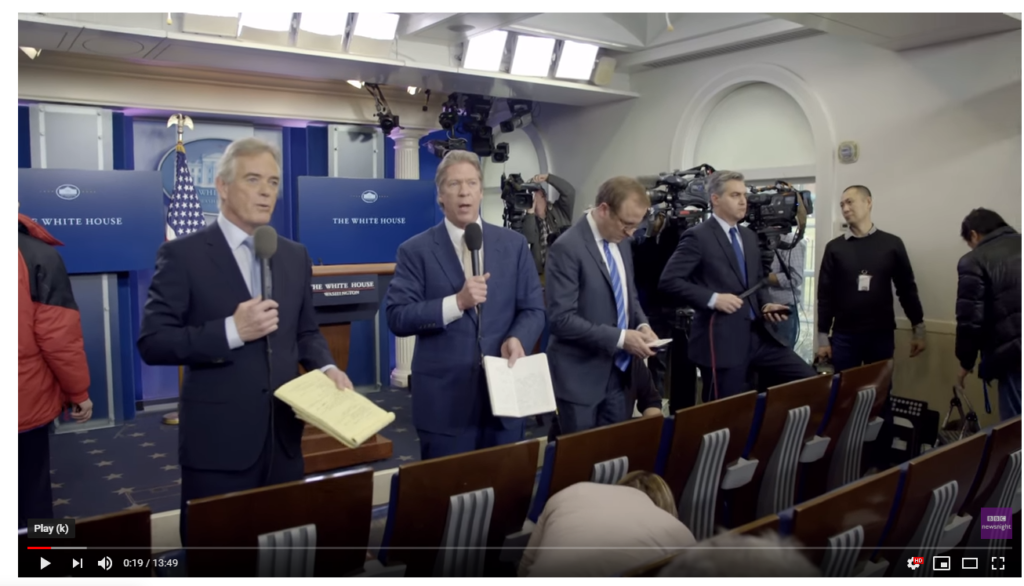
BBC’S INSIDE LOOK AT THE WHITE HOUSE PRESS CORPS and how they cover the president. (YouTube, 13:49 but totally worth the time–so interesting.)
This shows you just how difficult it can be to get the information you need to write your news article.

Who are the people who create fake news? The University of Massachusetts Amherst and the University of Leeds in the UK teamed up to find out. Read THEIR INTERESTING REPORT, “ARCHITECTS OF NETWORKED DISINFORMATION” on who these people are, and why they do what they do.
Download executive summary HERE.
Download full report HERE.

What’s FACEBOOK DOING TO DISCOURAGE FAKE NEWS? This is Mark Zuckerberg’s statement.
One of the things they’re doing is to ask people to rank a source’s trustworthiness; they’re hoping that will help to identify some fake news sources. (If you Google this topic, you’ll see lots of columns and insights on what these new Facebook initiatives may mean. It’s an ongoing project, and these are merely the early stages.)

Stanford University published this STUDY ABOUT THE INFLUENCE OF SOCIAL MEDIA AND FAKE NEWS IN THE 2016 US ELECTION.

Common Sense Media’s video, 5 WAYS TO SPOT FAKE NEWS.

“How Stuff Works” — a pretty good little flipchart-type presentation:
10 WAYS TO SPOT FAKE NEWS.

THREE LESSON PLANS about “fake news” from Cool Cat Teacher.com.
Study suggests that “lies spread faster than the truth” on Twitter. “Falsehood diffused significantly farther, faster, deeper, and more broadly than the truth in all categories of information…” according to researchers Vosoughi et al.
https://science.sciencemag.org/content/359/6380/1146.full
NPR article talks about the above study about how lies travel 70% faster on Twitter than the truth.
https://www.npr.org/sections/alltechconsidered/2018/03/12/592885660/can-you-believe-it-on-twitter-false-stories-are-shared-more-widely-than-true-one
MEDIA LITERACY ORGANIZATIONS
The Poynter Institute trains journalists and is a journalism watchdog for ethics and best-practices. Its media literacy arm, MediaWise, supports the education of young people about journalism, fact-checking and fake news.
On this page, they list a number of resources including games that teach about fake news.
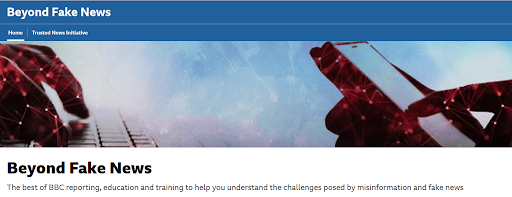
Check out the BBC’s broad collection of excellent fake news resources: https://www.bbc.co.uk/beyondfakenews/

The Toronto Star’s Washington correspondent, DANIEL DALE, is @ddale8 on Twitter.
He’s in the trenches, uncovering facts, digging around and fighting fake news on a daily basis.
*We can’t fully vouch for third-party links–the ones above are all useful, in our opinion, but their owners could change the material on them at any time, etc. etc. etc., blah, blah, blah.” (Please excuse the legalese.)
Also, if you have an excellent resource about “fighting fake news” please let us know on OUR FACEBOOK PAGE.

